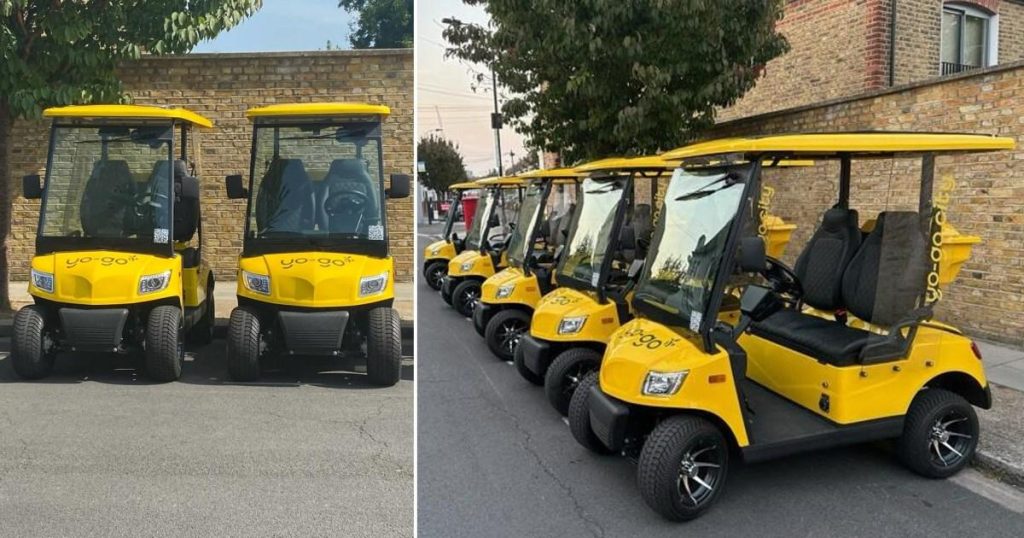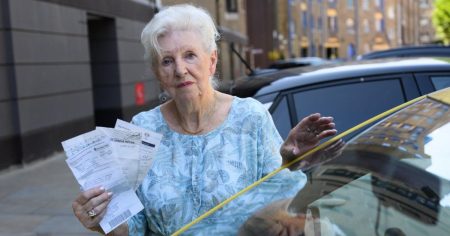Paragraph 1: Introducing Yo-go’s Electric Buggies in Fulham
A new mode of transportation has rolled onto the streets of Fulham, adding to London’s growing collection of rentable vehicles. These aren’t your typical cars or bikes, but rather bright yellow, four-wheeled electric buggies operated by a company called Yo-go. Officially termed Neighbourhood Electric Vehicles (NEVs), these compact carts offer an alternative to traditional car ownership and public transport, aiming to reduce congestion and provide a convenient, eco-friendly way to navigate the city. Currently, the service is limited to a fleet of 10 buggies available in four designated areas within Fulham: Parsons Green, Finlay/Fulham Palace, Niton/Woodlawn, and Fulham Reach.
Paragraph 2: How Yo-go Works: Rental, Cost, and Restrictions
The rental process for Yo-go’s NEVs is designed for ease of use and accessibility. Users between the ages of 25 and 70 with a valid driving license can rent a buggy through the yo-go.city app, available on both Apple and Android devices. Pricing is structured on a per-minute basis, with a standard rate of 20p per minute and a discounted rate of 10p per minute for subscribers. When parked outside designated areas – for instance, while picking up groceries or a passenger – the rate drops to 5p per minute. Unlike bike-sharing programs, Yo-go requires users to return the buggy to the same location where it was picked up. This closed-loop system aims to maintain order and prevent the scattered, sometimes abandoned vehicles often seen with dockless bike schemes.
Paragraph 3: Yo-go’s Vision: Reducing Congestion and Promoting Sustainable Transport
Yo-go’s founder and CEO, Sam Bailey, emphasizes the company’s commitment to addressing urban congestion. The compact size of the NEVs is intended to improve traffic flow and alleviate parking pressures. Furthermore, the buggies are fully insured and maintained by Yo-go, including recharging. The incorporation of solar panels on the vehicles’ roofs further contributes to their sustainability and extends their range. These features, coupled with the electric powertrain, position Yo-go as a forward-thinking solution for urban mobility, aligning with broader trends towards greener transportation options.
Paragraph 4: Comparing Yo-go with Other Micromobility Options: Lessons from Lime Bikes
The introduction of Yo-go’s NEVs follows the widespread adoption of Lime e-bikes in London, which began in 2021. While the e-bike program has largely been successful in providing a convenient and affordable mode of transport, it has also faced challenges, including vandalism and "hacked" bikes disrupting city streets. Other cities have even suspended their e-bike programs due to these issues. Yo-go’s more controlled approach, with designated pick-up and drop-off locations, stricter age requirements for users, and a smaller, more manageable fleet size, aims to mitigate these risks and ensure a more sustainable and less disruptive service.
Paragraph 5: Potential for Expansion and the Future of Car-Free Cities
Industry experts see potential for Yo-go’s model to expand beyond Fulham and even to other UK cities. Ben Mercer, a marketing director at Leisure Lakes Bikes, believes there’s "no reason" why these buggies shouldn’t become a common sight elsewhere. The growing popularity of rented e-bikes and now e-buggies signifies a shift towards car-free living, making it more accessible and practical. While completely car-free towns and cities may still be a distant goal, initiatives like Yo-go represent significant progress towards more sustainable and less congested urban environments.
Paragraph 6: Yo-go: A Step Towards a Greener, More Convenient Urban Future?
Yo-go’s arrival in Fulham signals a potential paradigm shift in urban mobility. By offering a compact, convenient, and environmentally friendly alternative to private cars, the company seeks to alleviate traffic congestion and contribute to a more sustainable urban landscape. While the current service is limited in scope, its potential for expansion is significant, offering a glimpse into a future where car-free or car-light living is a realistic and appealing option for more people. The success of this pilot program will be closely watched by other cities grappling with similar challenges of congestion and air pollution, and could pave the way for broader adoption of similar schemes across the UK.











